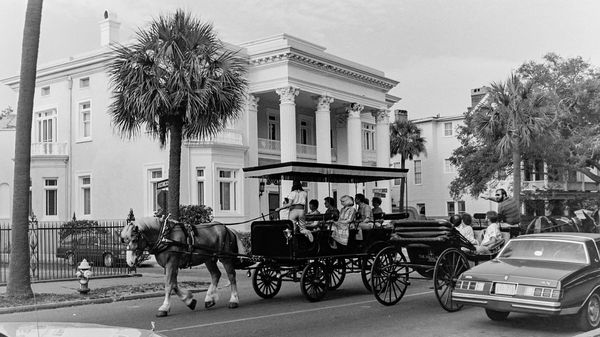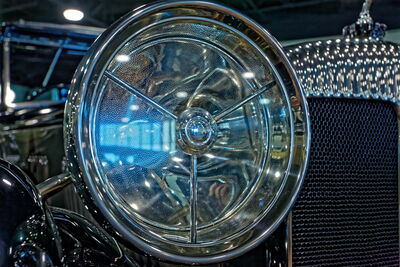Slide/negative scanners
Apr 3, 2018 11:37:36 #
My question is addressed to those owing and using scanners type Digitnow, Jumbl, Wolverine etc and not the ones owing flatbed full scanners the likes of Epson, Canon etc.
Can you please comment about the quality of the scanned images and if you are happy with them. Try not comparing to flatbeds.
Thank you
Can you please comment about the quality of the scanned images and if you are happy with them. Try not comparing to flatbeds.
Thank you
Apr 3, 2018 11:44:01 #
Kiriakos wrote:
My question is addressed to those owing and using scanners type Digitnow, Jumbl, Wolverine etc and not the ones owing flatbed full scanners the likes of Epson, Canon etc.
Can you please comment about the quality of the scanned images and if you are happy with them. Try not comparing to flatbeds.
Thank you
Can you please comment about the quality of the scanned images and if you are happy with them. Try not comparing to flatbeds.
Thank you
I have a Plustek scanner, which is a dedicated film scanner and not a flatbed. I got it mostly to scan old B&W negs, and I am pretty satisfied with the scans. But I still can't get prints quite as good as my darkroom prints from the negs, especially with over or underexposed negs.
Apr 3, 2018 12:04:47 #
Kiriakos wrote:
My question is addressed to those owing and using scanners type Digitnow, Jumbl, Wolverine etc and not the ones owing flatbed full scanners the likes of Epson, Canon etc.
Can you please comment about the quality of the scanned images and if you are happy with them. Try not comparing to flatbeds.
Thank you
Can you please comment about the quality of the scanned images and if you are happy with them. Try not comparing to flatbeds.
Thank you
Unless you go to a very expensive Hasselblad Flextight scanner (over $25,000), no scanner is going to give you as good a quality as a macro photograph of the slide or negative.
Using a high megapixel count full frame dSLR, bellows, and the best macro lens available for it (capable of between 1:1 and 4:1 (4X) reproduction ratios), coupled with a color-correct, highly diffused light source, you can photograph film images and retain nearly everything you would see in an analog print. Even better, you can record in raw, manipulate in software, and retain more of the brightness range and color saturation than you could ever have printed optically.
Even a Micro 4/3 camera and some junk from my garage can do this:(below)
Note the clouds in the scene of horse drawn carriage tours of Charleston, SC. I could never see those details in a silver halide print. But I could capture the negative in raw mode, invert the image curves, and adjust in Lightroom's Develop module or Photoshop's ACR (same thing, really), to get this. The original was a 35mm Ilford HP5 negative developed in ID11+.
Apr 3, 2018 12:15:07 #
Frayud
Loc: Bethesda,MD
I have an old Wolverine F2D that puts images onto an SD card. Used it once. The images were terrible. Too much contrast. I have since switched to a copying devise using my Sony A6000 and and old Vivitar f2.8 55mm auto macro, (originally used on my Olympus OM4) now sporting an e-mount adapter. The images are acceptable if not showing the absolute crisp color and sharpness of the original Kodachromes. Where needed, a little touch-up in Photos or its extension into Affinity with its ability to erase objects and perform Intelligent Fill-In does wonders. I now copy and discard the slides. Several thousand to go.
Apr 3, 2018 12:19:44 #
rfmaude41
Loc: Lancaster, Texas (DFW area)
burkphoto wrote:
Unless you go to a very expensive Hasselblad Flextight scanner (over $25,000), no scanner is going to give you as good a quality as a macro photograph of the slide or negative.
There are execellent drum scanners that are as good and cost a fraction of the Hassy. For dedicated scanners, think Canoscan or or the Nikon CoolScans.
Apr 3, 2018 12:45:23 #
Kiriakos wrote:
My question is addressed to those owing and using scanners type Digitnow, Jumbl, Wolverine etc and not the ones owing flatbed full scanners the likes of Epson, Canon etc.
Can you please comment about the quality of the scanned images and if you are happy with them. Try not comparing to flatbeds.
Thank you
Can you please comment about the quality of the scanned images and if you are happy with them. Try not comparing to flatbeds.
Thank you
Hey guys, I mentioned before what I am specifically interested about. Do not point me to 3000$ and 4000$ machines.
Thanks
Apr 3, 2018 14:33:11 #
Kiriakos wrote:
Hey guys, I mentioned before what I am specifically interested about. Do not point me to 3000$ and 4000$ machines.
Thanks
Thanks
I would recommend you look up such scanners on Amazon.com and read the user reviews. Also check out this article: http://www.toptenreviews.com/computers/peripherals/best-slide-to-digital-image-converters/
The cheap, under $250 scanners are not going to give you a state-of-the-art capture. They MAY give you an *acceptable* reproduction, if you are not picky about dirt, dust, scratches, color, contrast and brightness range, resolution high enough for large prints, and other technical attributes. If you just want snapshot-like reproductions and images for web posting, they may suffice.
Most of the truly decent film scanners (such as the Nikons) have been discontinued and are no longer supported on modern operating systems and hardware. Flatbeds are still common. Plustek still makes some dedicated film scanning units.
Apr 3, 2018 15:15:57 #
burkphoto wrote:
I would recommend you look up such scanners on Ama... (show quote)
Having used a Canoscan for many years ---
I FULLY AGREE WITH YOU !!
Apr 4, 2018 06:28:15 #
I own a Pacific Image Prime Film XA Slide & Negative Scanner coupled with LaserSoft Imaging's "Silverfast Archive Suite 8" scanning software (Ai Studio + HDR Studio). I am quite pleased with the results using this combo and have used it to archive a large number of nature slides. Total cost for the scanner and software comes in at around $900.
Apr 4, 2018 08:06:22 #
billnikon
Loc: Pennsylvania/Ohio/Florida/Maui/Oregon/Vermont
Kiriakos wrote:
My question is addressed to those owing and using scanners type Digitnow, Jumbl, Wolverine etc and not the ones owing flatbed full scanners the likes of Epson, Canon etc.
Can you please comment about the quality of the scanned images and if you are happy with them. Try not comparing to flatbeds.
Thank you
Can you please comment about the quality of the scanned images and if you are happy with them. Try not comparing to flatbeds.
Thank you
Prices are all over the place. One reasonable one is the new Kodak Scanza film scanner. Others would be the Canon CanoScan 9000F Mark II. Others would be Braun, Pacific Image, Plustek, and Wolverine.
Apr 4, 2018 08:34:55 #
Apr 4, 2018 08:47:01 #
Apr 4, 2018 08:54:06 #
Dale40203
Loc: Louisville, KY
I was expecting to see something of the grain in the negative since you were responding to a question regarding film scanning, and you specifically refer to details in the original film.
Apr 4, 2018 09:09:52 #
Go to this link for my solution to scanning slides/negatives:
http://www.uglyhedgehog.com/t-448681-1.html
http://www.uglyhedgehog.com/t-448681-1.html
Apr 4, 2018 09:45:05 #
billnikon wrote:
Prices are all over the place. One reasonable one is the new Kodak Scanza film scanner. Others would be the Canon CanoScan 9000F Mark II. Others would be Braun, Pacific Image, Plustek, and Wolverine.
The latest issue of Shutterbug has a review of the Kodak Scanza. My take away is that the time I would spend on such a project would make it worth spending more on a scanner (or using my flatbed) to get better results. I think I will also try the light table & macro route. Of course, the Scanza may meet your needs, since you didn't state the intended use of the output.
If you want to reply, then register here. Registration is free and your account is created instantly, so you can post right away.






